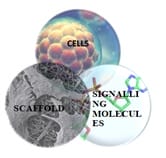Role of tissue engineering in oral & maxillofacial surgery – a review
Angeline L R.1*, Rohini T.2, Balasubramaniam S.3
DOI: https://doi.org/10.17511/ijmrr.2019.i02.11
1* Reenu Angeline L, BDS, Department of Oral & Maxillofacial Surgery, Government Dental College & Hospital, Chennai, Tamil Nadu, India.
2 Rohini T., Assistant Professor, Department of Oral & Maxillofacial Surgery, Government Dental College & Hospital, Chennai, Tamil Nadu, India.
3 Saravanan Balasubramaniam, Retd. Principal, Department of Oral & Maxillofacial Surgery, Government Dental College & Hospital, Chennai, Tamil Nadu, India.
Tissue engineering can be defined as the “reconstitution of tissue and organs, in vitro for use as model systems in basic and applied research, or for use as grafts to replace damaged or diseased body parts or body functions”. Biomaterials have been used as replacement tissues and grafts have been used to reconstruct defects in craniofacial region till Uristmade the first attempt of producing exogenous bone with the help of bone morphogenetic proteins. The success of tissue engineering over the field of all transplantation is that conceptually a three-dimensional functional tissue is designed. This field has become a boon to the Cranio Maxillofacial surgeons and has provided them with a supplement to existing treatment for reconstruction of Oral & Craniofacial region. The purpose of this article is to present an overview of the various uses of tissue engineering in the field of Oral and Maxillofacial Surgery.
Keywords: Tissue Engineering, Scaffold, Growth factors, Signalling molecules
| Corresponding Author | How to Cite this Article | To Browse |
|---|---|---|
| , BDS, Department of Oral & Maxillofacial Surgery, Government Dental College & Hospital, Chennai, Tamil Nadu, India. Email: |
Angeline LR, Rohini T, Balasubramaniam S. Role of tissue engineering in oral & maxillofacial surgery – a review. Int J Med Res Rev. 2019;7(2):115-121. Available From https://ijmrr.medresearch.in/index.php/ijmrr/article/view/1050 |


 ©
© 